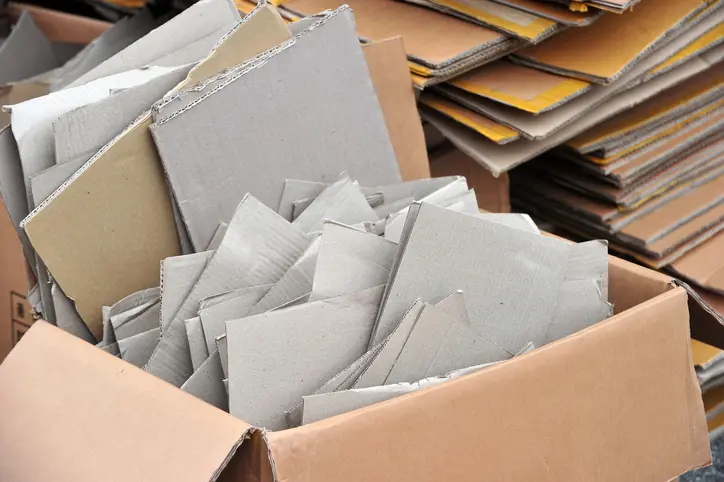Cardboard is a ubiquitous material in our daily lives. We encounter it through packaging, boxes, and various paper products. It’s lightweight, versatile, and relatively easy to recycle, making it an eco-friendly choice for packaging.
However, when it comes to the environmental impact of cardboard, one crucial question often arises: how long does it take for cardboard to decompose? In this blog, we’ll explore the decomposition process of cardboard and its environmental implications.
The Composition of Cardboard
To understand how long it takes for cardboard to decompose, it’s essential to know what it’s made of. Cardboard typically consists of paper pulp, glue, and sometimes a thin layer of plastic or wax for added protection.
Paper pulp is primarily derived from wood fibres, commonly sourced from pine, spruce, and fir trees. While the paper fibres can decompose relatively quickly, other components can hinder the process.
Factors Affecting Cardboard Decomposition
Numerous variables can affect the duration required for cardboard to undergo decomposition:
Type of Cardboard
The type of cardboard matters. With its layered structure, corrugated cardboard may take longer to decompose than single-layer cardboard.
Environmental Conditions
Decomposition is notably influenced by environmental aspects like temperature, moisture levels, and sunlight exposure. In warm and damp conditions, cardboard disintegrates at a faster rate.
Presence of Coatings
Some cardboard is coated with materials like plastic or wax to make them water-resistant or durable. These coatings can slow down decomposition significantly.
Microorganisms
Microorganisms, like bacteria and fungi, are essential for decomposition. In a well-ventilated composting environment, cardboard can decompose more rapidly due to the abundance of these organisms.
Size and Thickness
Smaller pieces of cardboard may decompose more quickly than large, thick cardboard items. Breaking cardboard into smaller pieces can expedite the process.
The Decomposition Timeline
The time it takes for cardboard to decompose varies widely depending on the abovementioned factors. In general, cardboard decomposition can range from a few weeks to several months or even years. Let’s break it down further:
Composting
In a well-managed composting environment with suitable materials and conditions, cardboard can decompose in a few weeks to a few months. This is the most efficient way to recycle cardboard and minimise its environmental impact.
Landfills
If cardboard ends up in a landfill, the decomposition process is significantly slower due to the lack of air and moisture. In a landfill, cardboard can take years to break down.
Natural Environment
If cardboard is exposed to the elements in the natural environment, decomposition can take several months to a few years, depending on environmental conditions.
Recycling
Cardboard recycling is an eco-friendly option that doesn’t involve decomposition. Instead, the cardboard is broken down, pulped, and turned into new products, reducing the need for new raw materials.
Environmental Implications
Understanding how long it takes for cardboard to decompose is essential for assessing its environmental impact. The slower decomposition times in landfills and less favourable conditions contribute to environmental problems, such as methane gas emissions and soil contamination. Methane is a potent greenhouse gas released in landfills, contributing to climate change.
To minimise the environmental impact of cardboard, consider the following:
Recycling
Whenever feasible, opt for cardboard recycling. This practice decreases the need for fresh raw materials and reduces energy-intensive manufacturing processes.
Composting
If you can access composting facilities or a backyard compost pile, compost cardboard to speed up decomposition and create nutrient-rich compost.
Reduce and Reuse
Whenever possible, reduce the use of cardboard by choosing products with minimal packaging and reuse cardboard boxes for storage and moving.
Choose Eco-Friendly Alternatives
Consider alternatives to cardboard, such as reusable cloth bags or containers, to reduce your reliance on disposable packaging materials.
In Summary
How long it takes to decompose depends on various factors, including the type of cardboard, environmental conditions, and the presence of coatings. The decomposition timeline can range from weeks in a well-managed composting environment to years in a landfill. Understanding the decomposition process of cardboard is crucial for making environmentally conscious choices.
Recycling, composting, and diminishing our dependence on cardboard can mitigate its ecological footprint and foster a more sustainable tomorrow. So, the next time you encounter cardboard packaging, remember that your choices can make a difference in how long it takes for it to decompose and its overall environmental footprint.
At Essex Tube Windings, we make sure to use eco-friendly materials for all of our mailing tubes while never compromising on quality. We advise anyone using cardboard packaging to be aware of its timeline and use sustainable methods to keep our environment safe.

